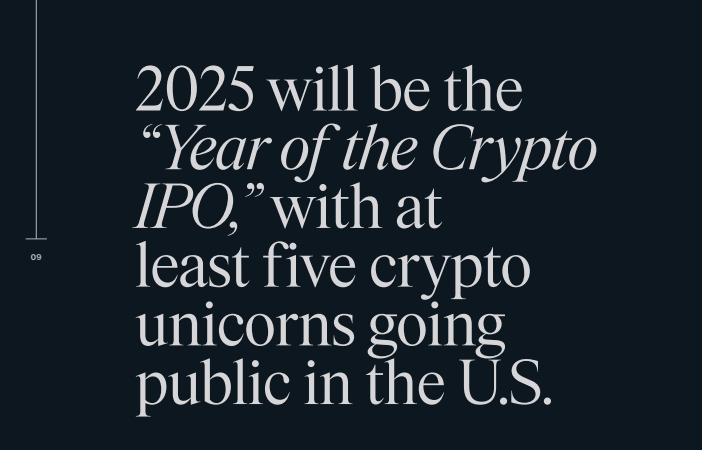Regulatory challenges are still an issue for assets like Solana and XRP and their potential ETFs, but the potential appointment of a pro-crypto SEC chair could shift the regulatory environment. In Europe, Bitwise launched a Solana staking ETP to expand its market presence, while Bitcoin ETFs in the U.S. surpassed gold ETFs in assets under management. Analysts now predict that Bitcoin could reach $200,000 by 2025, driven by spot ETF inflows and adoption.
Bitcoin and Ether Combo ETF Expected to Pave Way for New Crypto ETFs
The crypto exchange-traded fund (ETF) landscape in the United States is poised for major developments in 2025, and a Bitcoin (BTC) and Ethereum (ETH) combo ETF is expected to lead a new wave of crypto funds. Bloomberg senior ETF analyst Eric Balchunas and fellow analyst James Seyffart believe that this inaugural ETF will be followed by others tracking assets like Litecoin (LTC) and Hedera (HBAR).
Seyffart acknowledged that there are still some regulatory challenges faced by certain crypto assets, especially after the Securities and Exchange Commission’s (SEC) rejection of Solana (SOL) ETFs on Dec. 7. He explained that ETFs tied to assets like SOL and XRP are unlikely to advance until a new SEC chair is selected and assumes office.
The analysts pointed out that Litecoin and Hedera are viewed more favorably by regulators, which increases their likelihood of approval. Litecoin’s status as a Bitcoin fork and its potential classification as a “commodity” boosts its chances as well. The fact that Hedera is not labeled as a security by the SEC also gives it a regulatory advantage.
In contrast, XRP and SOL face more serious regulatory hurdles. The SEC classified both as securities, and Ripple is already engaged in a legal battle over XRP’s status. Despite these challenges, Balchunas and Seyffart are still a bit uncertain about the investor demand for Litecoin and Hedera ETFs, even if they are approved.
The potential shift in the SEC’s stance on crypto is linked to Trump’s expected nomination of Paul Atkins, a pro-crypto businessman and former SEC commissioner, as the agency’s next chair. This move could start a shift toward de-regulation and more crypto-friendly policies. The current SEC Chair Gary Gensler announced his resignation, effective on Trump’s inauguration day on Jan. 20.
Bitwise Launches Solana Staking ETP in Europe
Solana’s regulatory hurdles are not holding everyone back. Bitwise launched a Solana staking exchange-traded product (ETP) in Europe under the stock ticker BSOL to strengthen its presence in the European crypto market. The ETP was introduced on Dec. 17 in partnership with Marinade, a self-custodial automation tool, and offers an annual percentage yield (APY) of 6.48%. This is more than competitors like 21Shares, which provides an APY of about 5.49%. BSOL’s very competitive management fee of 0.85% also challenges its European rivals, including 21Shares.
The ETP was launched as Bitwise still awaits regulatory approval for a spot Solana ETF in the United States. In November, the firm registered a statutory trust in Delaware as a precursor to filing with the SEC. While Bitwise awaits the green light, VanEck’s head of digital asset research Matthew Sigel is still confident that the approval odds for a U.S. spot Solana ETF will be “overwhelmingly high” by the end of 2025.
Bitwise’s European expansion started in August with the launch of its first Solana ETP, ESOL, which does not offer staking rewards. The introduction of BSOL addresses this gap by providing an integrated staking feature. Bitwise’s European footprint was also boosted by its acquisition of ETC Group, adding nine crypto ETPs to its portfolio and raising its assets under management to over $4.5 billion. The ESOL product currently holds about $24 million in assets under management.
(Source: Bitwise)
Bitwise is still optimistic about the future of crypto markets. Investment chief Matt Hougan and research head Ryan Rasmussen predict that at least five crypto unicorns, including Circle and Kraken, will go public by 2025.
Bitcoin ETFs Surpass Gold in AUM
Balchunas and Seyffart might be right about Bitcoin’s power in the ETF space. Net assets in U.S. Bitcoin ETFs surpassed those in gold funds for the first time. On Dec. 16, Bitcoin ETFs collectively reached $129 billion in assets under management (AUM), surpassing U.S. gold ETFs, according to K33 Research.
Eric Balchunas pointed out that the AUM figure includes both spot Bitcoin ETFs and those tracking the crypto through derivatives like futures. He also shed some light on the very rapid growth of Bitcoin ETFs, and stated that it is remarkable that they are competing with gold only 11 months after spot Bitcoin ETF launched. If spot ETFs alone are considered, Bitcoin ETFs hold $120 billion compared to gold’s $125 billion.
The rise of Bitcoin ETFs started in January with the launch of spot BTC funds after a lengthy approval process by the SEC. Since then, Bitcoin ETFs have grown very quickly, and broke the $100 billion in net assets by November. Analysts believe this impressive growth was due to a more positive outlook for Bitcoin, which was spurred by market dynamics after Donald Trump’s election victory. BlackRock’s iShares Bitcoin Trust (IBIT) leads the market by managing close to $60 billion in assets, and surpassed BlackRock’s own iShares Gold Trust (IAU) in November.
Investors are increasingly turning to Bitcoin and gold as part of a “debasement trade,” which is a strategy aimed at hedging against economic uncertainties. JPMorgan noticed this trend back in October, and linked it to rising geopolitical tensions, persistent inflation concerns, and high government deficits.
Bitcoin Poised for $200K by 2025
Bitcoin’s price is expected to see a lot of growth in 2025, driven by strong institutional demand and increasing adoption, according to analysts at Bitfinex. In a Dec. 17 market report, they predicted that Bitcoin could reach a minimum of $145,000 by mid-2025, with a best-case scenario of $200,000 under more favorable conditions.
While they still predict some price volatility in the first quarter of the year, they believe any dips will be short-lived because of large inflows into spot Bitcoin ETFs and the rising global and institutional adoption.
Since the launch of U.S.-based spot Bitcoin ETFs in January, these funds attracted approximately $36 billion, making them major players in the market with holdings exceeding 1.13 million BTC. This institutional interest is considered to be a key factor in stabilizing Bitcoin’s price during market corrections.
The current Bitcoin price of around $104,000 is already prompting long-term bullish projections from well known voices in the crypto industry. Nic Carter of Castle Island Ventures suggested that Bitcoin could eventually reach $900,000 to match gold’s market cap.
Bitfinex analysts shared various scenarios for Bitcoin’s future trajectory. If the price mirrors the 2021 cycle, it could potentially reach $339,000, which is a 40% increase above its moving averages. In a more conservative scenario resembling the extended 2017 cycle, Bitcoin might peak at around $290,000 by early 2026.
Speculation around the United States creating a strategic Bitcoin reserve also adds another layer of intrigue. After Donald Trump’s election victory, pro-crypto Senator Cynthia Lummis shared her plans to propose legislation for the U.S. government to buy and hold Bitcoin for at least 20 years. Crypto analyst Tyler Durden believes that such a move by any nation could disrupt the traditional four-year market cycles and create a new narrative for Bitcoin’s price trajectory.











